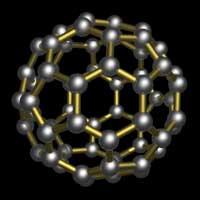Conversion of non-magnetic metals into magnetic
2015/08/06 Etxebeste Aduriz, Egoitz - Elhuyar Zientzia Iturria: Elhuyar aldizkaria

Researchers at Leeds University have shown that non-magnetic metals can become magnetic, as published today in Natura. Copper and manganese have become magnetic, combining them with organic molecules. Magnetism is weak and lasts only a few days, but researchers believe that this achievement opens a way for obtaining new magnetic materials.
Whether a metal is magnetic or not, it depends on the distribution of electrons in the atom and the interactions between them. In fact, Leeds researchers have managed to change these characteristics in copper and manganese. Its thin films have been combined with 60 molecules of carbon atoms. These carbon molecules trap electrons from metals and have discovered that this electron movement between metals and organic molecules makes copper and manganese magnetic.
Researchers have recognized that we will now have to continue working to achieve stronger and more sustainable magnetism. And they hope that this can be achieved, for example, by testing different compounds and structures.

Gai honi buruzko eduki gehiago
Elhuyarrek garatutako teknologia





